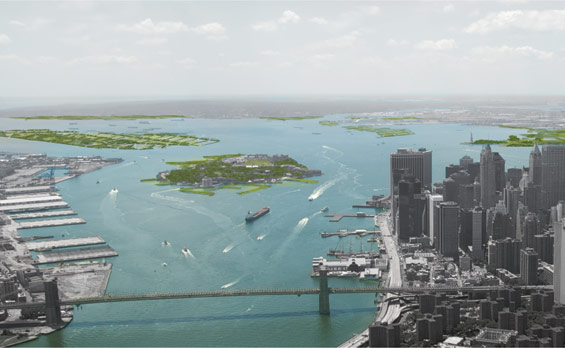For New York–a metropolis realized on its maritime potentialities–oceanic borders now threaten America’s most populous region and premiere city. Illustrated through the ongoing havoc and devastation caused by tropical storm Sandy, in New York City climate change has become an irrevocable reality. In response to this unprecedented environmental crisis Spoil Islands envisions landscape architectural interventions that utilizes local dredge material and improve dredge-related practices to abate coastal flooding and enhance coastal habitat.
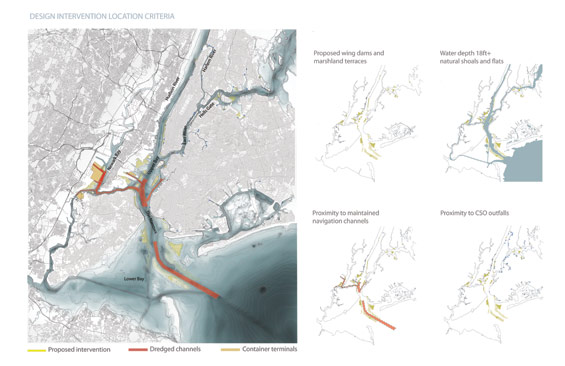
The proposed site, the New York, New Jersey Harbor is the forth largest estuary in the world and the third largest shipping economy in the U.S. This industry relies on 250 miles of navigation channels carved from the estuarine floor. With the evolution of the modern container ship channels repeatedly require deepening, this is a complicated, expensive, and environmentally disruptive undertaking. Yet the material dredged from the harbor floor offers distinct opportunities for restructuring the city’s vulnerable edges.
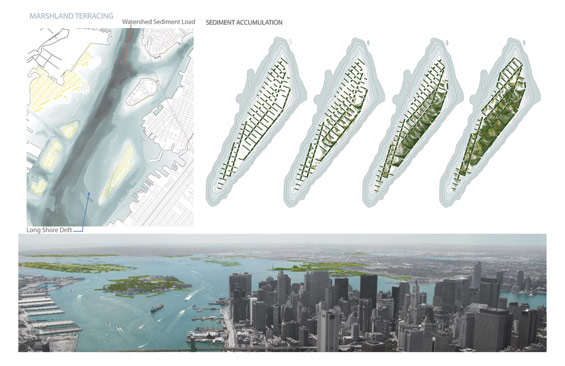
Spoil Islands proposes utilizing dredge material for the construction of a protective network of marshland terrace fields and a series of submerged wing dams. The marshland terraces built concurrently with dredge spoil extraction, would be composed of shipping containers filled with otherwise limited contaminated dredge material capped with clean dredge fill. Exterior terrace edges would be stabilized by breakwater structures and wave attenuating artificial reefs. Sited according to areas of natural sediment accumulation and adjacency to flood zones, deployed as an extension of the city grid, terraces would maximize inter-tidal edge reducing fetch and wave energy in extreme weather events and storm surges.
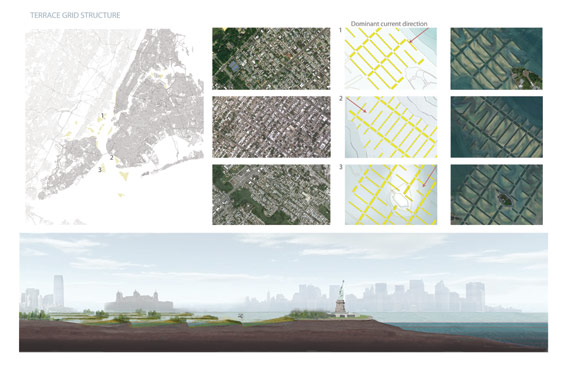
The terrace grid formation would additionally promote the deposition of suspended sediment – over time generating valuable habitat and protective barrier islands. Designed to capture watershed sediment load and longshore drift deposition, while protecting sediment loss from tidal flow, looser grid structure at the terrace mouths would allow water to easily enter the system from the dominant sediment load direction. Increasing grid solidity would slow water and capture sediment. The Harbor’s heavy annual sediment deposition (6 inches per year) as well as storm surges would nourish this system, exposing ephemeral estuarine processes of sediment deposition, current patterns and tidal ebb and flow within the distinctly recognizable static city grid.
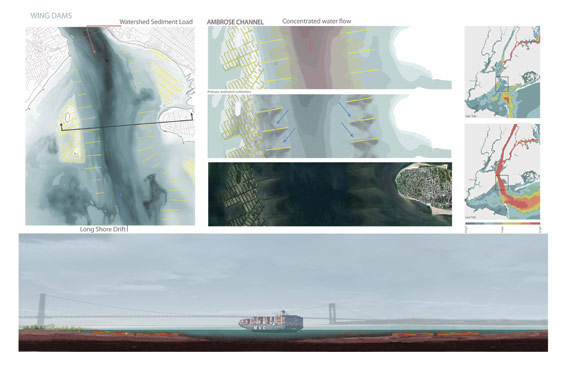
As an alternative function, a series of submerged wing dams are proposed. Constructed of shipping containers filled with mildly contaminated spoils this system would concentrate water flow into trafficked portions of navigation channels. Proposed on the primary navigation path the resultant current, scouring the channel at low tide, would naturally deepen it by preventing sediment disposition. With the maturation of terrace and wing dam systems, sediment accumulation in navigation channels would be greatly reduced, extending dredging cycles and reducing dredge operations, disposal volume, and related environmental impacts.
To ensure best dredging and construction practices, the proposal recommends a “biological window” approach based on esturain patterns of migration, nesting and tidal ebb and flow. Dredging operations and the construction of marshland terraces and wing dams would be determined by these conditions.
While delivering crucial ecosystem services, the Spoil Islands would provide New Yorkers with the further benefit of recreational and educational opportunities. Also determined by “biological windows”, access via hiking and kayak trails would be granted during times of least impact. A restricted path network and design interventions would further mitigate human disturbance.
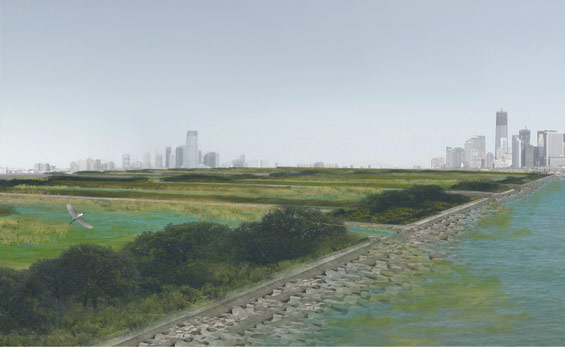
Focused on protection from inevitable sea-level rise, on the enrichment of estuarine health, best dredging practices and on the development of urban place, Spoil Islands offers a landscape architectural alternative to traditional hard engineering flood protection to reimagine the possibilities for a city threatened by the sea.

